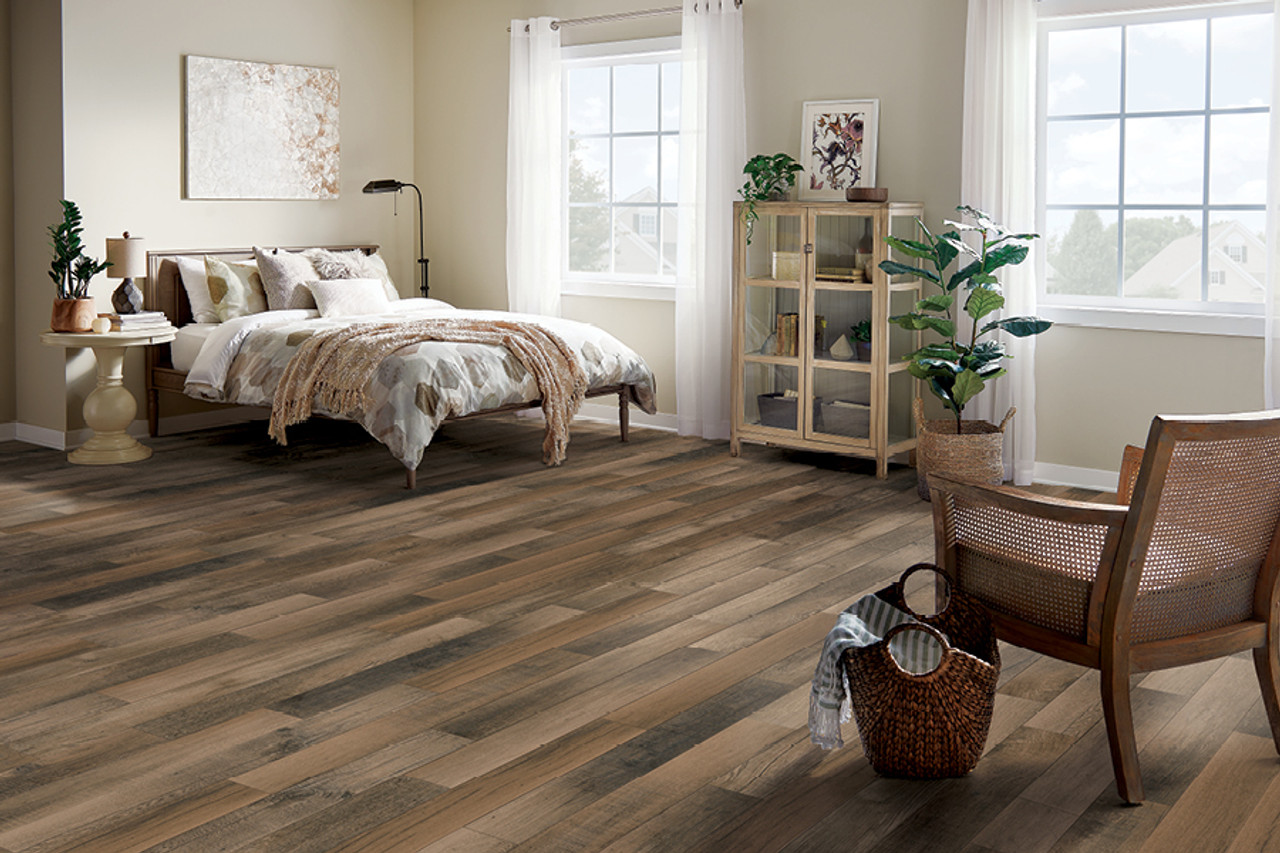

Solid Hardwood Flooring
If you’re considering upgrading your floors, solid hardwood is one of the best choices you can make. Known for its natural beauty and timeless appeal, solid hardwood brings unmatched character and warmth to any room. Whether you're aiming for a classic look or a more contemporary style, hardwood floors provide the perfect foundation for your home’s design. Best of all, the price may be more affordable than you think!
At Georgia Carpet, we make it easy to find the perfect hardwood flooring at a fantastic price that will last many times longer. We believe that high-quality hardwood shouldn’t have to come with a hefty price tag. That’s why we offer a wide selection of beautiful hardwood options to suit a variety of tastes and budgets. Whether you're looking for the rich tones of oak, the elegance of maple, or the unique appeal of cherry, our extensive inventory ensures you'll find exactly what you need.
Hardwood flooring remains one of the top choices for homeowners, thanks to its durability, timeless design, and easy maintenance. At Georgia Carpet, we’re committed to empowering our customers with plenty of information and options to help you choose the right hardwood floors for your space. Our team is here to guide you through every step of the process, from selecting the right wood species and finish to ensuring a seamless installation. With our high-quality products and great prices, upgrading to solid hardwood has never been easier!
Types of Hardwood Floors
There are two basic types of hardwood floorings on the market: solid and engineered. If you want hardwood flooring that's classic and absolutely loaded with detail, solid is the best choice. Solid hardwood flooring is derived by cutting the entire board out of a single tree. So, in essence, each plank you put down is one single, solid piece from that type of tree. This is considered what's known as sawn hardwood flooring in the industry. The other type of hardwood floor on the market is called engineered hardwood and this is made by bonding layers and layers of ply together to form a plank. The top of the board is typically sealed and finished for easy installation. Engineered hardwood floors are less expensive than sawn hardwood floors.
Sawn Hardwood Floors
Sawn hardwood floors are regarded for their extreme beauty and strength. Though, stable by the strength of the tree, solid floors are very susceptible to movement like warping and expanding that can be brought on by normal moisture levels in a home. If you choose solid hardwood flooring, your beautiful wood floors won't just be susceptible to the glass of water that just spilled over, they'll also absorb moisture in the air, even if the humidity level in your home typically isn't that high. To achieve maximum wear-ability or lifespan, solid flooring must be kept at a certain temperature and relative humidity at all times. Solid hardwood flooring, just like engineered hardwood, is like a sponge that absorbs the moisture in the air causing the planks to expand and contract. Sometimes it's normal for a solid hardwood to have gaps between them in dryer parts of the year. These gaps are normal and are to be expected. In fact, the gaps may even increase over time, adding character to your floors.
Domestic hardwood flooring species such as hickory, maple, and oak, are the foundation of most all residential and commercial hard surface installs. Hickory is the most dense, giving your floor the ability to withstand heavier weight that causes dents. While hardwood is not always the best performing products for very active lifestyles, you can bet it's the most gorgeous. And though it's not the cheapest flooring option, it is the most sought after. Red and white oak flooring make up about 80% of all flooring in the USA. While it's the softest of the 3 major species next to maple and hickory, it is the most stable and affordable floor we have. Maple, though less dense than oak and hickory, can withstand more force upon it, measured by what is called the Janka Scale (See Janka Hardness Test Page for more details). This is achieved by the trees tight grain pattern, which creates lineal harder wood pockets to stabilize the plank. The durability of hardwood flooring is not so much based upon the type of tree, as opposed to the chemicals in the finish itself. Quality as a whole is based upon the entire product, not just a species. Most solid hardwood floors come in 3/4" thickness, often allowing for a sand and refinish installation later, offering more life to the floor even after several years in the field. Although, Bruce Hardwood Flooring has a 5/16" solid hardwood floor called Natural Reflections or Natural Choice. This is mostly used to install over existing floors or to be glued down in a basement. Since solid 3/4" is more apt to absorb moisture from the slab, a nail-down installation, on or above grade, is requested.
Engineered Hardwood Floors
Engineered hardwood floors are more common than sawn hardwood floors because they are less expensive to make and have a variety of features that make them more friendly to residential users. Engineered hardwood floors can withstand a wide range of temperatures and moisture levels, making them ideal for homes. The floors come in a variety of finishes and many engineered hardwood floors have a tongue-and-groove cut to make them easy to install with fewer gaps. All engineered hardwood floors have similar features, but the best hardwood floor brand will depend on your needs and your budget.
If it's time to upgrade your home's flooring, turn to Georgia Carpet for all of your flooring needs. Our hardwood floors are beautiful and affordable, with a variety of finishes to choose from. Shop online or set up a virtual appointment to work with a sales agent to find the right flooring solution for your space. Whether you know that you want or are contemplating Somerset vs Bruce hardwood floors, our agents can help. At Georgia Carpet Industry, you can buy where the dealer's buy.
Frequently Asked Questions:
Q What wood is hardwood?
A: Hardwood comes from deciduous trees like oak, maple, cherry, and walnut.
Q: What is the best grade of hardwood flooring?
A: The highest grade is Clear Grade, which has few or no imperfections. Other grades like Select or #1 Common may have more natural features.
Q: Is hardwood flooring waterproof?
A: No, traditional hardwood is not waterproof but can be water-resistant with special coatings. It’s important to clean spills quickly to avoid damage.


